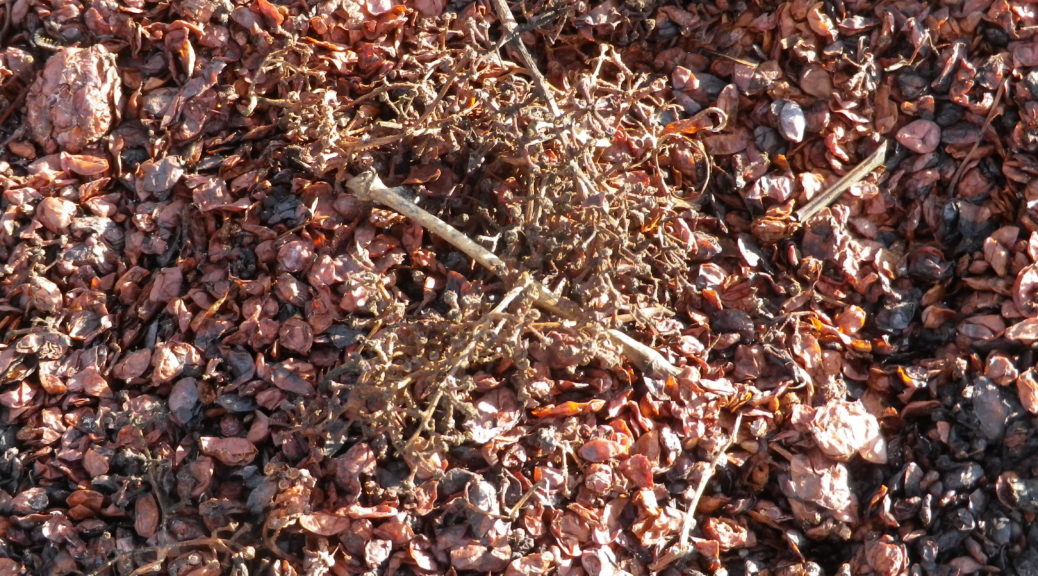What I Learned
In the German region of Wuerttemberg, a lot of wine is produced. Much of it grows on steep hillsides facing the Neckar River, but some of it is produced in the valleys of its main tributaries. Wuerttemberg is a hilly state, with well-drained, sun-facing slopes in many districts. The vines and orchards compete to cover slopes in Wuerttemberg’s wine district of the Untere Neckartal (also known apparently as Wuerttembergisches Unterland), near Heilbronn, in southern Germany.
Wuerttemberg is especially proud of its red varietals. According to the Deutsches Weininstitut, an astounding 70 percent of vines in Wuerttemberg are red grape varietals. Some of these were, if not developed here, improved here. The numbers in parenthesis represent each red varietal as a percentage of all grapes grown in Wuerttemberg.
Trollinger (19%) is the largest single red varietal planted. Known as Vernatsch in Sud Tirol (where it likely originated), in Wuerttemberg it results in a light (and lightly colored), fruity, wine.
Lemberger (15%) is also known as Blaufraenkisch in other parts of the German-speaking world. It likely comes from the lower Steiermark, Austria area. It is a darker colored, and heavier red than Trollinger.
Pinot Meunier (12.5%), famed primarily as one of the key grapes raised in Champagne, is also known as Schwarzriesling and Muellerrebe in Wuerttemberg. They all the same red grape varietal. Samtrot is a slight mutation of this same grape, and is found almost exclusively around Heilbronn.
Spaetburgunder (11.5%), or Pinot Noir to much of the rest of the world, is also grown here, and with good weather conditions, and a talented cellar master, can produce some outstanding Pinot Noir wines.
Acolon was developed locally in 1971 at Weinsberg’s Staatliche Lehr- und Versuchsanstalt fuer Wein- und Obstbau (State Education and Research Institute for Viticulture and Pomology). It is a cross between Lemberger and Dornfelder (a favorite in the nearby Pfalz region). Only on the state’s register since 2002, its plantings have only expanded since then. Wines from this grape are full-bodied and dark-colored, with a range of flavors and only moderate tannins. Sadly, it can be difficult to find this delicious wine outside of Wuerttemberg.
Furthermore, it is not only the grapes that make the wines from Wuerttemberg so interesting, it is also what they do with the wine from those grapes. Here are three examples:
Trollinger-Lemberger is a popular blend of wines in Wuerttemberg, seen on many a menu at local restaurants. The fruitiness of the Trollinger mixes well with the fuller body and darker color of the Lemberger to provide a wine which pairs well with some of the heavier German foods.
Schillerwein is a red wine mixed with white wine. More than one grape varietal of either red or white grapes can be in the mix, resulting in an extremely large variety of wines to experience. The rose-colored wine blends made by local wineries are often favorites at local fairs or festivals, and in wine taverns (Besen), where they are served cold on a hot summer day. It is truly a local, Wuerttemberg wine experience not to be missed.
Weissherbst is a rose wine which may only come from any one of a number of red wine varietals. The varietal used should appear on the label, such as a Spaetburgunder Weissherbst, or Lemberger Weissherbst. It is often an off dry or even a sweet wine. It should be chilled before serving.
What I Tasted
2016 Fleiner Samtrot, Kabinett, Halbtrocken, Weingut Flein-Talheim: A semi-dry red wine with dark ruby color, an intriguingly rich nose, with hints of dried dark cherry, and cherry flavors, with a hint of smoke; smooth with medium tannins.
2016 Riesling Spaetlese, Deutscher Praedikatswein, Weinkellerei Kuehfuss (Talheim): An off-dry white wine with medium plus gold; floral, vanilla and honey nose, with vanilla, oak, floral and slight golden delicious apple flavors; medium acidity.
2016 Schwarzriesling, Fleiner Kirchenweinberg, Trocken, Deutscher Qualitaetswein, Weingut Flein-Talheim: A dry red wine with medium cranberry red color; a pronounced cherry nose, with hints of minerality, with cherry and vanilla flavors; medium tannins.
2016 Trollinger with Lemberger, Trocken, Qualitaetswein, Genossenschaftskellerei Heilbronn-Erlenbach-Weinsberg (Heilbronn): A dry red wine with medium red color; a nose of spice and cherry, with hints of leavened bread, with cherry and allspice flavors; medium minus tannins.
2015 Rose Sekt, Extra-Dry, Fleiner Kirchenweinberg, Genossenschaftkellerei Heilbronn-Erlenbach-Weinsberg (Heilbronn): A dry sparkling rose wine with dark salmon color, and fine, somewhat lively bubbles; cherry nose, with floral (rose) and cherry flavors.
